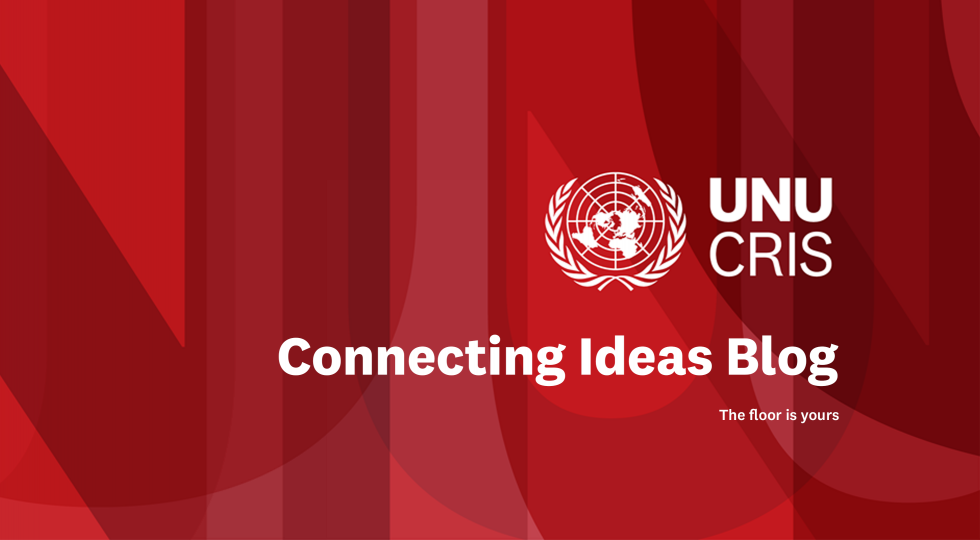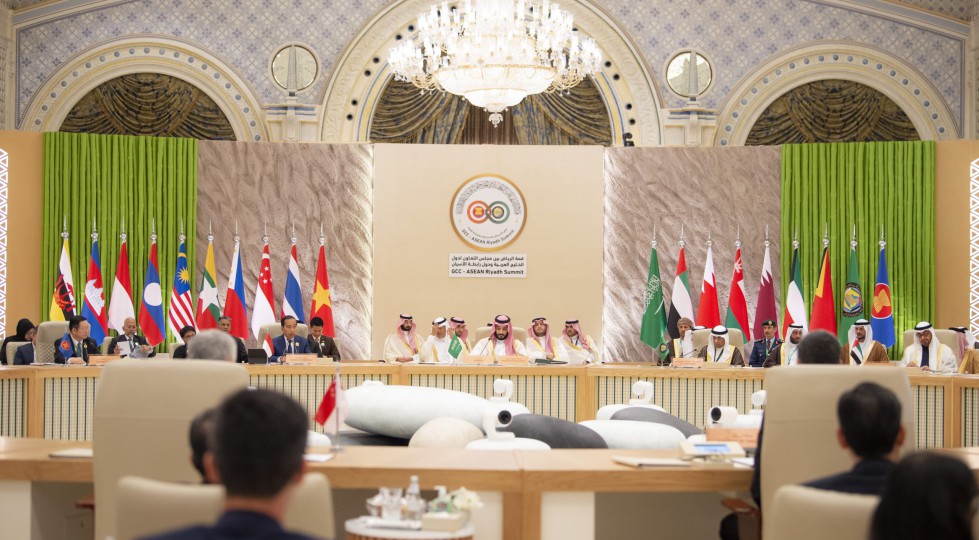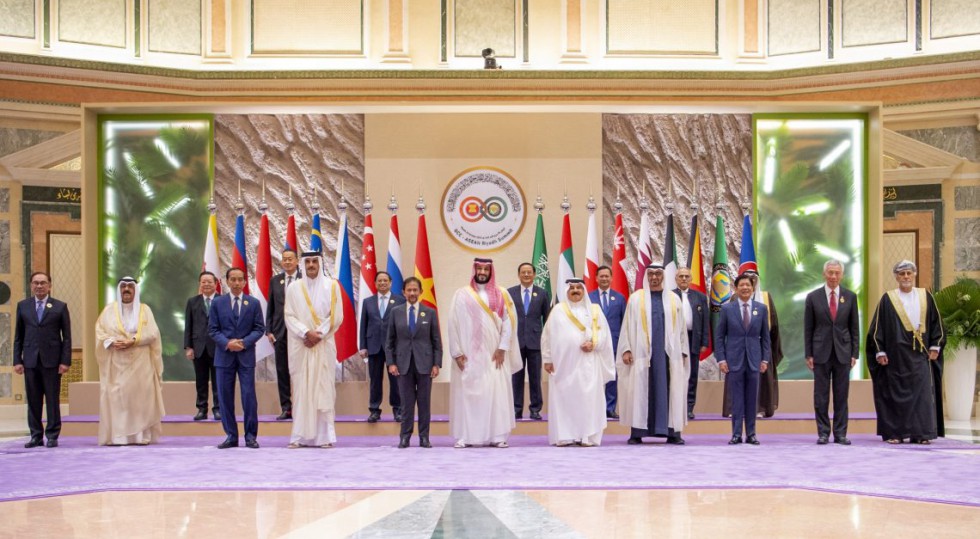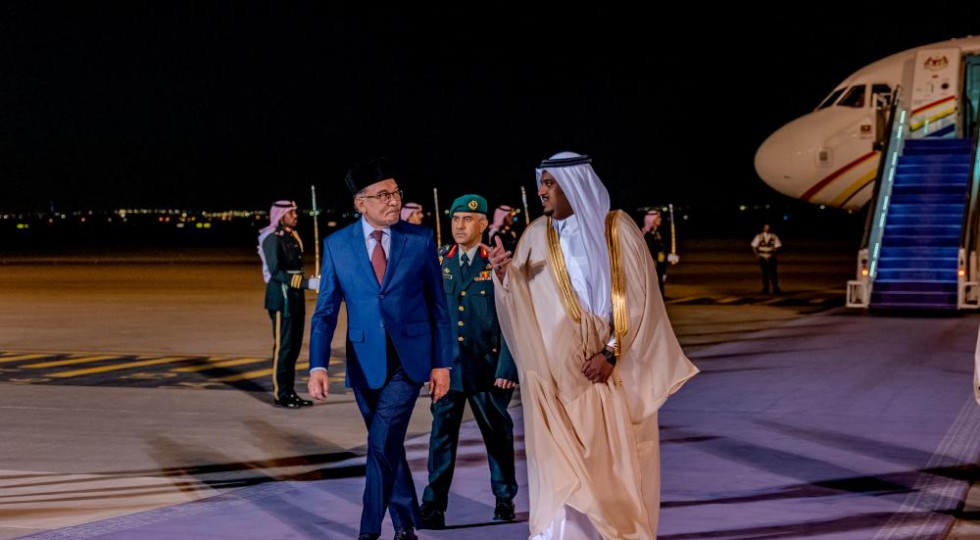The First ASEAN-GCC Summit and More Diverse Interregional Cooperation

Associate Research Fellow, UNU-CRIS
05 February 2024 | #24.02 | The views expressed in this post are those of the author(s) and may not reflect those of UNU-CRIS.
On 20 October 2023, the Association of Southeast Asian Nations (ASEAN) and the Gulf Cooperation Council (GCC) held their first-ever interregional summit. The theme of the summit was “Sustainable Future through Creative Partnership” which comes at a time of considerable uncertainty and fragility in global politics. The summit and its resultant agreements recognise that ASEAN and GCC are determined to chart their own courses without choosing specific sides in relation to current political conflicts while at the same time recognising the value of multilateral approaches to regional and global challenges. It is too early to make any predictions as to how this new stream of interregional cooperation will impact or perhaps even modify power relations in the pursuit of international organisation. The immediate value lies in how the summit provides a path to multilateral cooperation that involves significant states and regions that are not part of the Global North/West bringing greater diversity in the pursuit of global order.
The stated purpose of the Summit was to discuss ways to upgrade and develop the ASEAN-GCC interregional partnership based on “common interests” and “historical ties.” In opening the Summit, the Prime Minister of Saudi Arabia welcomed the desire of the two regional groups to “further develop cooperation and partnership” to increase “opportunities for development” along with consolidating measures in support of “security and stability.”
The final Joint Statement of the Summit includes a wide range of topics and areas for furthering cooperation ranging from political cooperation to furthering trade and investment activity to promoting people-to-people connections and cultural activities. The Joint Statement is far from definitive in setting out future actions or obligations. Most of its provisions are open-ended calling for encouraging, exploring, and identifying opportunities for increased interactions. The areas where there appears to be a stronger commitment to cooperation are primarily trade-related whereby the regional organisations will be seeking to promote increased trade relations between the two regions and in support of the international trading system. Unsurprisingly, the main emphasis of the summit and its outcomes is on economic, investment, and trade relations.
The Summit adopted a Framework of Cooperation (2024-2028) document, that sets out an action plan for realising the objectives of interregional cooperation. Even here, however, many of the statements of action are limited to “exploring” or “examining” the possibility of moving forward with increased cooperation across a wide range of issues. An important element of the Framework of Cooperation is the inclusion of an Implementation Mechanism (paras 26-28) which will be essential for maintaining interest in maintaining interregional cooperation. For implementation of the Framework, the Secretariats of ASEAN and the GCC will continue to coordinate in pursuing the Framework through annual meetings, and the exchange of information and experiences regarding the Framework. There is a call for regular interactions between ambassadors and permanent missions in both Jakarta and Riyadh. Hopefully, these measures will become formalised to guarantee the meetings take place along with public statements about what was discussed. This will support increased attention upon the development of interregional cooperation mechanisms and support increased public awareness.

The Framework implementation mechanism also encourages relevant regional sectoral bodies to use the Framework to pursue increased cooperation. This will be an area where interregional cooperation will be beneficial for mutual learning and development, especially for the GCC. ASEAN being the older organisation has a much more developed institutional structure compared to the GCC. In particular, ASEAN has an extensive range of Sectorial Ministerial Bodies that bring together the member states at varying levels of activity allowing civil servants across government to interact. Of course, the effectiveness and utility of these bodies can be dismissed as powerless but they do contribute to awareness about the regional organisation and provide regular interactions. There is also an organised status of ASEAN accredited entities which includes various non-governmental bodies like think tanks, universities, and business organisations that are supportive of ASEAN’s work. At present, the GCC has a limited institutional structure and increasing its capacity for increased interactions will not only strengthen its global presence but also further its reputation at the national level.
Making the most of the opportunities interregional cooperation provides depends on the political will to keep that cooperation active. Interregional relations between ASEAN and the GCC have been limited. The first official interregional connection came in the 1990s, mainly through organised meetings at the sidelines of the UN General Assembly. In 2007 an agreement on ASEAN-GCC ministerial meetings was reached with the first meeting taking place in 2009, in Bahrain. This resulted in a Memorandum of Understanding (MOU) between the ASEAN Secretariat and the GCC Secretariat, the adoption of a Joint Vision, and the development of an ASEAN-GCC Two-Year Action Plan (2010-2012) which was adopted at the Second ASEAN-GCC Ministerial Meeting in 2010 in Singapore. These developments did not result in any sustained engagement with only two official ASEAN-GCC Foreign Minister meetings taking place after 2010 (in 2018, 2019). There have been increased bilateral interactions between ASEAN and GCC members in recent years which has in turn stimulated increased interest in interregional relations. The GCC-Singapore Free Trade Agreement (2013) has been a further stimulating force for a wider interregional agreement.
Maintaining and furthering interregional cooperation will require active engagement from both sides going forward. The previous ASEAN/GCC Two-Year Action Plan did not stimulate sufficient support for increased cooperation and quickly faded from view. The Summit’s Joint Statement calls for holding summits every two years with Malaysia confirming it will host the 2026 Summit. It has also been announced that Saudi Arabia will host an ASEAN-GCC Economic and Investment Conference in the first half of 2024 to examine what can be done to further private investment activity and increase trade connections, while also stimulating interest in discussing an interregional free trade agreement. With both organisations much depends on the member states for ensuring ongoing action in support of interregional cooperation.

The ASEAN leaders have given positive backing to the Summit and its Framework Cooperation plan seeing interregional cooperation as an important part of addressing sustainable growth and development in Southeast Asia. Cambodia’s Prime Minister welcomed the Summit as it will bring new sources of growth in key areas of the regional economies. Thailand’s Prime Minister emphasised that current cooperation can be elevated to expand economic activity into further areas, such as tourism, and that supporting business-to-business connections will be important for both regions. Indonesia’s President expressed support for the great potential increased interregional cooperation will provide in support of strengthening energy security, realising the green transition, and maintaining food security. The President said the Summit is an opportunity for ASEAN and the GCC to realise their full potential through balanced, open, and fair investment and trade systems and called for the establishment of a more advanced ASEAN-GCC trade framework. The Malaysian Prime Minister has also proposed immediate action on creating an interregional free trade agreement so that two-way trade can flourish and maximise the economic potential of the two regions.
From the GCC perspective, the Saudi Foreign Minister expressed the view that the GCC and ASEAN are two of the more important economic groups in the world and further cooperation will strengthen their respective positions and support global growth. The King of Bahrain views the Joint Cooperation Plan as a mechanism for realising the maximum benefits of interregional cooperation, in particular relating to trade and investment opportunities. The UAE President explained the Summit comes at an important time in global affairs and it is essential to pursue the “myriad of opportunities” further interregional cooperation provides.
Leaders also recognised the important contribution the Summit and further integration cooperation will make to global order as it demonstrates the value of diversity. A key feature of this process is how the two regional organisations demonstrate a willingness to cooperate in the absence of great powers. Both regions are significant players in global trade and politics and do not wish to be forced into a position to pick sides. The President of Indonesia said that this new path of interregional cooperation is a “positive force in the midst of a divided world.” The UAE President explained "Today, the world faces serious challenges ranging from supply chain disruptions, energy and food security, climate change, and pandemics to various conflicts and disputes." And therefore it is essential to pursue the “myriad of opportunities” further interregional cooperation provides. Malaysia’s Prime Minister described the adoption of the Framework of Cooperation 2024-2028 as historic “in the sense that the GCC and ASEAN are two small regional groups that are economically very vibrant, and we are entering this collaboration without the influence of the big powers.”

ASEAN and the GCC represent regional organisations that play a significant role in global affairs, sometimes collectively, sometimes through their individual member states. The potential for this new association to result in a “creative partnership” is contingent upon the internal dynamics of both regions. With both ASEAN and the GCC the member states place state sovereignty and non-interference in domestic affairs as the foundations for any level of engagement and this applies to the regional organisation as well. Both regional bodies work on a consensus basis and relations between members are not always the most friendly. The Secretariats for both organisations have limited autonomy and depend on the stronger member states for further activity. These factors hinder high-level decision-making and prevent increased regional integration within the blocs and will also impact the extent to which interregional integration will occur.
The type and nature of interregional activity that evolves remains to be seen but it is occurring at a time when there is increased attention on regional arrangements is prominent due to the limitations and failures of universal international organisations. A key issue in furthering interregional cooperation will be the extent to which the individual member states support the regional body or prefer to pursue bilateral relations. Singapore demonstrates this as it has been able to sign a free trade agreement with the GCC which may make it less willing to support an interregional agreement. Following on from the Summit the preference for bilateral approaches was clear as individual member states from both regions met to discuss a range of issues and in some cases signed agreements for bilateral cooperation. This does not exclude further interregional cooperation provided there is the political will for regional action alongside bilateral relations.
In the current global order, the major powers continue to demonstrate their importance but equally, it is clear that alignment with one or the other of the great powers does not provide for a secure or sustainable future. Both ASEAN and the GCC are demonstrating a high degree of confidence in their development and capabilities and seeking to assert their regional dynamics when pursuing global relations. By seeking to work together it shows how the pursuit of global order beyond the great powers is not only possible but also beneficial to global development by bringing different actors and voices into the mix. At a time of uncertainty, pursuing creative partnerships will hopefully contribute to a more sustainable global future.
